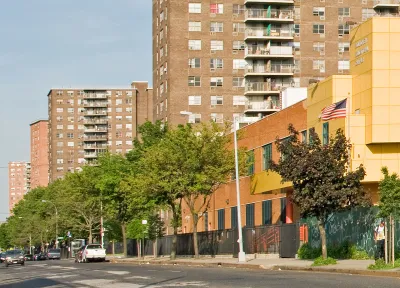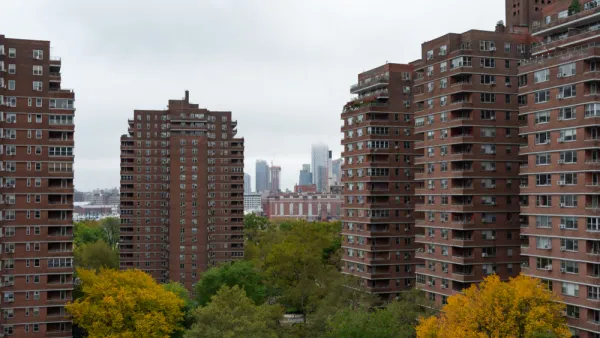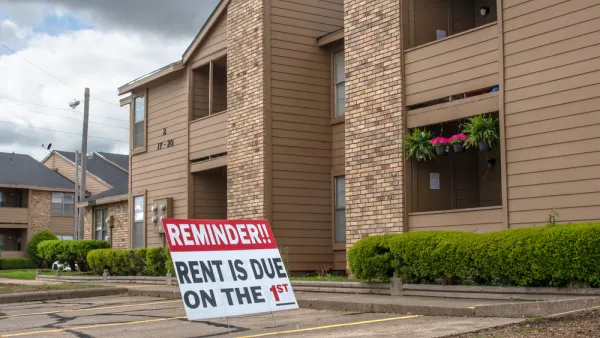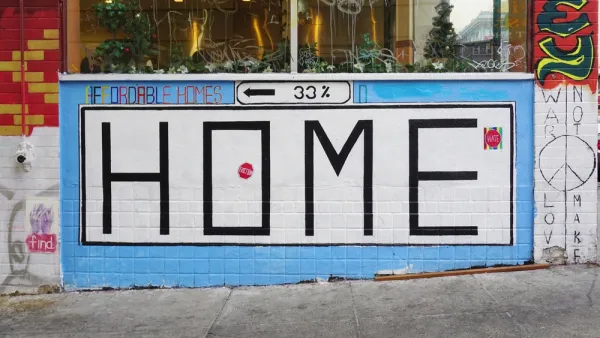An article in The Nation rejects the notion that the market will solve the country's current affordable housing crisis.

Mathew Gordon Lasner writes a history of public housing, while also making an impassioned plea for cities to build a coalition of support for new, "deep" subsidies for public housing in the future. Lasner weites of the housing affordability crisis that is striking cities and towns of all sizes and in all geographic areas of the country.
Tax credits, low-interest loans, land trusts, zoning, and other land-use regulations have all been deployed in the service of lowering the cost of housing for increasingly rent-burdened Americans. Yet amid these myriad offerings, the one remedy capable of providing the quantity and quality of affordable housing we need is not even on the menu: deep cash subsidies for construction and/or operation of buildings.
Lasner is essentially arguing for a return to a mode first implemented 140 years ago, with the first subsidized apartment complex in the country—Home Buildings in Cobble Hill, Brooklyn. The bulk of the article is devoted to tracing a details history of the rise and fall of subsidized housing.
That history all leads up to Lasner's present appeal: "what if people in cities suffering from housing inequality all over the country joined forces to begin pushing for this solution together?" Noting the understandable concern about the past failures of public housing, Lasner notes that "[p]Public housing could look and feel very different today than in the past, adding "[t]The key difference would be that we would have a lot more of this nonprofit-developed housing than now, and it would be a lot more affordable."
FULL STORY: The Case for Public Housing

National Parks Layoffs Will Cause Communities to Lose Billions
Thousands of essential park workers were laid off this week, just before the busy spring break season.

Retro-silient?: America’s First “Eco-burb,” The Woodlands Turns 50
A master-planned community north of Houston offers lessons on green infrastructure and resilient design, but falls short of its founder’s lofty affordability and walkability goals.

Delivering for America Plan Will Downgrade Mail Service in at Least 49.5 Percent of Zip Codes
Republican and Democrat lawmakers criticize the plan for its disproportionate negative impact on rural communities.

Test News Post 1
This is a summary

Test News Headline 46
Test for the image on the front page.

Balancing Bombs and Butterflies: How the National Guard Protects a Rare Species
The National Guard at Fort Indiantown Gap uses GIS technology and land management strategies to balance military training with conservation efforts, ensuring the survival of the rare eastern regal fritillary butterfly.
Urban Design for Planners 1: Software Tools
This six-course series explores essential urban design concepts using open source software and equips planners with the tools they need to participate fully in the urban design process.
Planning for Universal Design
Learn the tools for implementing Universal Design in planning regulations.
EMC Planning Group, Inc.
Planetizen
Planetizen
Mpact (formerly Rail~Volution)
Great Falls Development Authority, Inc.
HUDs Office of Policy Development and Research
NYU Wagner Graduate School of Public Service





























